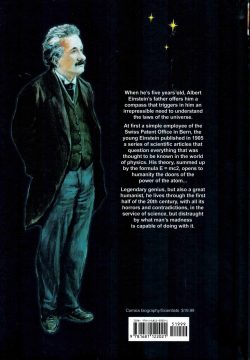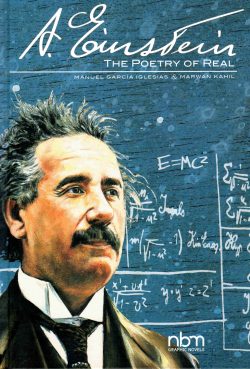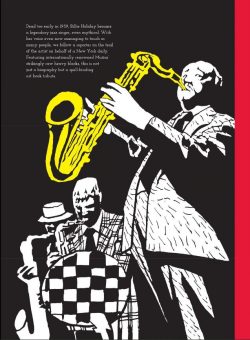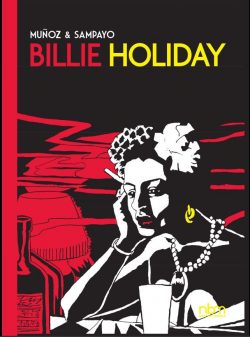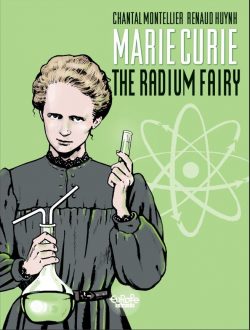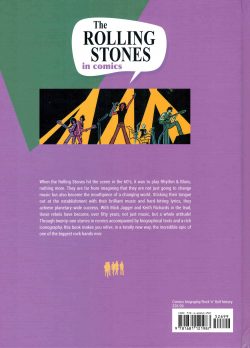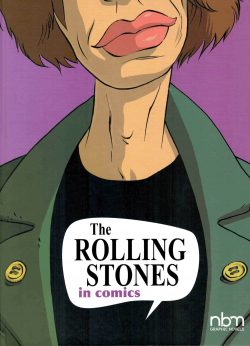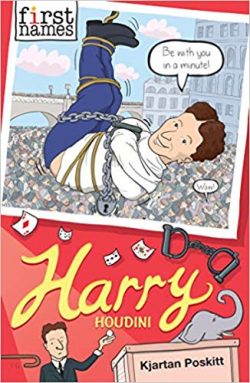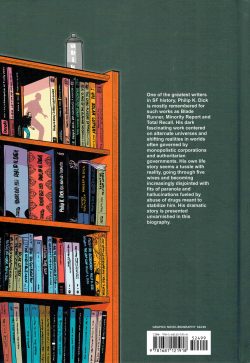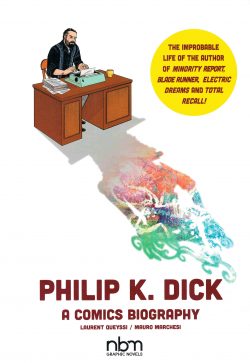


By Terry Eisele & Jonathon Riddle (CreateSpace)
ISBNs: 978-1-48399-114-6 (TPB); 978-1-48399-123-8 (TPB) and 978-1-48399-127-6 (TPB)
As any long-time reader will attest, I’m a huge advocate of doing it yourself when it comes to making comics, and this collection – three books of an epic historical exposé of one of modern humanity’s greatest atrocities thus far – shows just why, as it spectacularly blends harsh fact with high drama to reveal the tragic story and eventual small triumph of Anna Nesporova whose family was targeted in error by the Nazis occupying Czechoslovakia…
Sadly unavailable in digital formats yet, but still readily available in trade paperbacks, the testament is divided into three quietly understated, deeply evocative volumes of ambitiously oversized monochrome memoirs, crafted by historian Terry Eisele & illustrator Jonathon Riddle from Nesporova’s own words, dramatizing the horrific story of the Nazi atrocity at Lidice in Czechoslovakia.
The memories are not merely those of a survivor but come from a woman whose entire family was intimately connected with the cause of the tragedy…
The history opens in With Only Five Plums: The Time Before as an elderly woman is encouraged by an interviewer to talk of times long past but never forgotten. She cautiously relates the idyllic life in the nondescript hamlet of Lidice before specifically concentrating on the expansive Horak family and her life as innocent, ordinary Anna Horakova during increasingly trying times.
Relating instances of village life, childhood experiences and the early days of her marriage, Anna’s story takes a dark turn when describing Christmas customs. In 1941, a cherished family meal tradition presaged disaster for the entire Horak clan…
In June 1938, European leaders trying to appease Hitler allowed Germany to annexe part of Czechoslovakia and, as a consequence, Anna’s brother Josef fled to Britain, joining the growing émigré/refugee population. He dutifully wrote home that he numbered amongst his new friends Edvard Benes and Jan Masaryk: the leaders of the government-in-exile…
The next stage in the tragedy came when Nazi aristocrat Reinhard Heydrich – a sadistic monster eagerly expediting Hitler’s pogrom against the Jews – was assassinated. The Horak family were mistakenly implicated in the plot.
Nazi retaliation was astoundingly disproportionate: the village where they lived – almost universally Christian – was eradicated from the Earth; the male population massacred and the women sent to concentration camps in a display of calculated butchery as bad as anything visited upon the Romani, Jews or any other ethnicity the Nazis deemed “subhumanâ€.
Heavily pregnant at the time, Anna – along with other expectant mothers – was separated from the rest. As the children were delivered, they were taken away. Those that passed certain tests were removed to be brought up German, whilst the mothers joined their sister villagers in packed cattle-cars at rail marshalling yards. The destination was Ravensbruck Concentration Camp…
The tale resumes in With Only Five Plums Book 2: This Dark Age where, following a brief recap, Anna details the appalling journey, paying especial detail to an elderly Jewish woman’s attempts to cheer up younger girls with the story of Rabbi Loew’s Golem. That fabulous avenger was created to protect the Jews of Prague during a previous wave of persecution…
After many days and hundreds of miles, the train arrives in Fürstenberg from where the survivors are force-marched to the camp. Anna’s record of daily humiliations and the slow, piecemeal destruction of bodies and spirits covers three years, but she considered herself lucky. At least she had a skill the Germans found useful (professional-standard sewing) and wasn’t part of a group considered genetically inferior such as the Roma “gypsiesâ€.
Heartbreaking memories of Romani inmate Florica (and her folktale of the origins of blonde-haired people) poignantly counterpoints a diary of privation and desperation and serves to underline the horrific accounts of the scientist-torturers Ernst-Robert Grawitz and Ludwig Stumpfegger who used women as guinea pigs for their horrendous experiments…
The captivity suddenly ended in spring. The panicked Germans were in retreat: burning files and dismantling buildings. The women were led out of the gates with a few guards and ordered to march. They staggered through Germany and other countries shattered by bombs and, as the days passed, many died. Soon they were not enough soldiers and Anna and some other women slipped away, heading always towards a home that no longer existed.
Avoiding the “liberating†Russian soldiers, the group finally reached Czechoslovakia, battered but once more a free nation. Here Anna met Mrs. Kubrova; wife of her husband’s employer, who took her in and eventually drove her to Lidice… or at least where it had once been…
The chronicle concludes in With Only Five Plums Book 3: Life in the East is Worthless, which describes the aftermath of the war. Throughout all her trials and torments, Anna had been utterly oblivious to the fate of her family and her home. Now she learns that both had been eradicated with devastating efficiency. All that was left was the daughter taken from her at birth and lost seemingly forever somewhere in Germany…
From Kubrova, Anna discovers what the Nazis had done to turn a thriving, bustling village into a barren featureless field and of other survivors – mostly stolen children. These scenes are more harrowing in their understated simplicity than anything else in this grim graphic report…
However, there is a slight moral victory to be seen as aged Anna then relates how Lidice was rebuilt and repopulated (despite the Soviet Union’s absorbing the newly liberated nation into their Warsaw Pact-enforced alliance) before the saga concludes with an emotional Epilogue wherein Anna finally reveals the fate of her stolen daughter…
Slipping back and forth in time, conversationally adding depth and historical background to a remarkably restrained, tightly controlled and shatteringly effective examination of human nature at its worst and best, With Only Five Plums (a Czech expression akin to “with only the clothes on your backâ€) focuses on one of the most depraved and appalling acts in human history and manages to extract a message of hope and triumphant perseverance from the tragedy.
This triptych is a superb example of pictorial reportage and graphic memoir, with each big (280 x 216mm) book also offering poetry written about the atrocity (The Far-off Village by Mazo de la Roche, Lidice by C. Day Lewis and To Lidice by George England respectively); text features and extensive, fascinating excerpts from ‘Jonathon’s Sketchbook’.
Anna Nesporova passed away in 2006, before these books were completed, but the sense remains that the brooding, painfully oppressive and achingly moving story related would have made her proud. As with all accounts of Atrocity, the tale of Lidice needs to be told and retold, if there’s to be any hope of stopping such things from happening again and as always, such accounts work best when they come from the hearts and mouths of those who were there.
With Only Five Plums is a powerful story of inhumanity, stupidity and endurance that will certainly impress fans of war stories and devotees of fine storytelling, but hopefully it will most appeal to history teachers; professional and not…
© 2013 Terry Eisele. All rights reserved.
For more information and to obtain your own copies check out www.terryeisele.com
